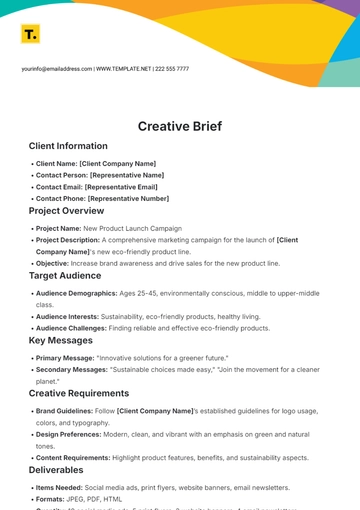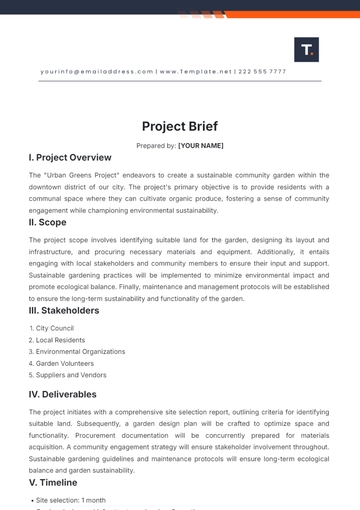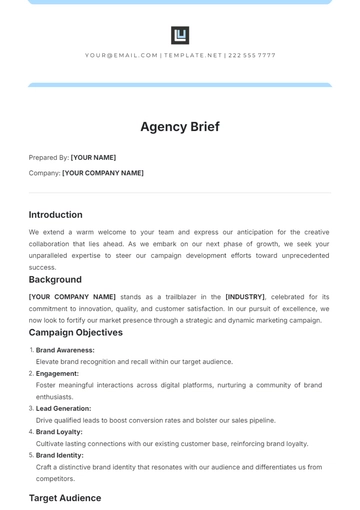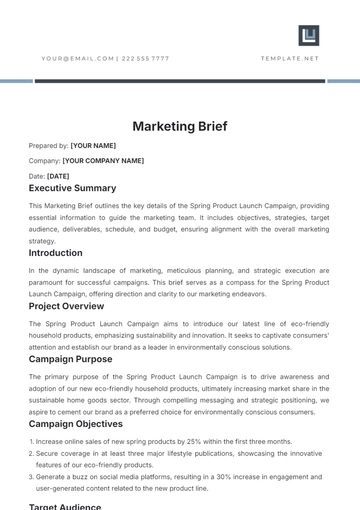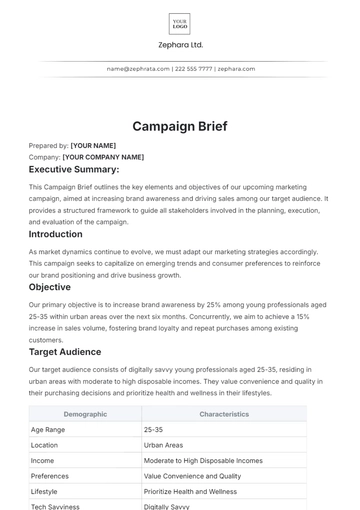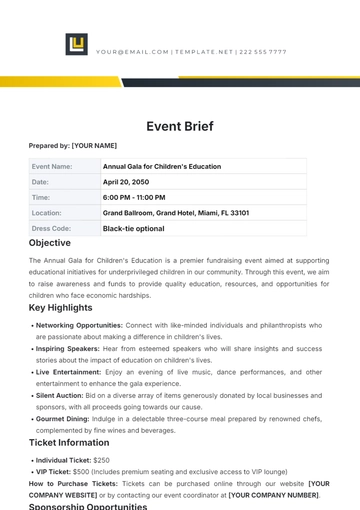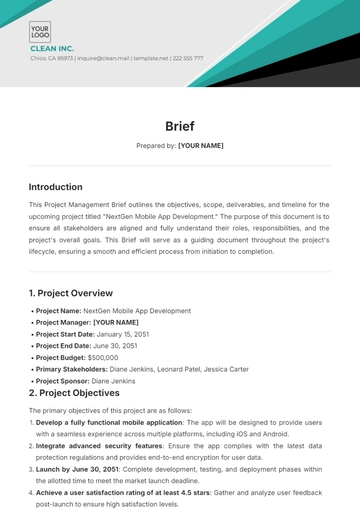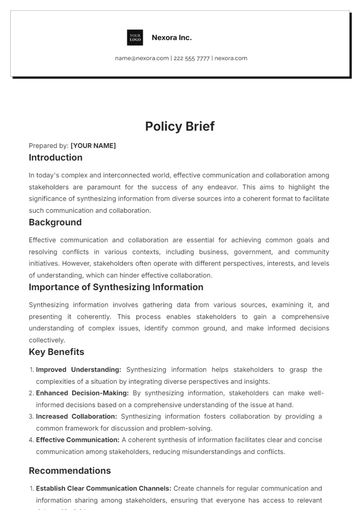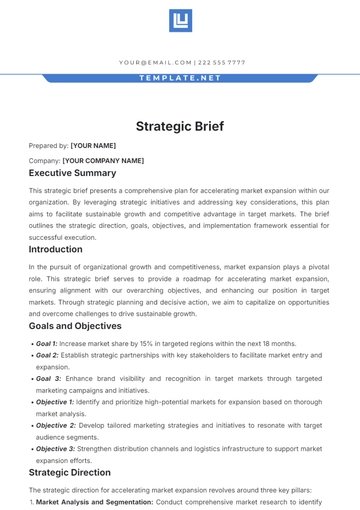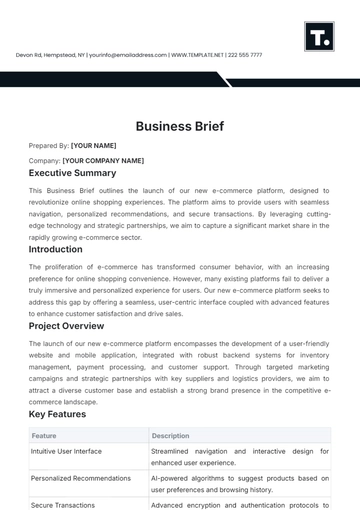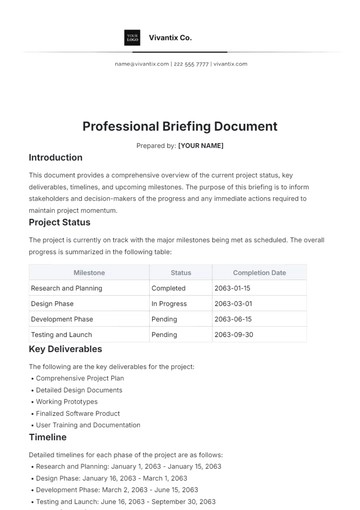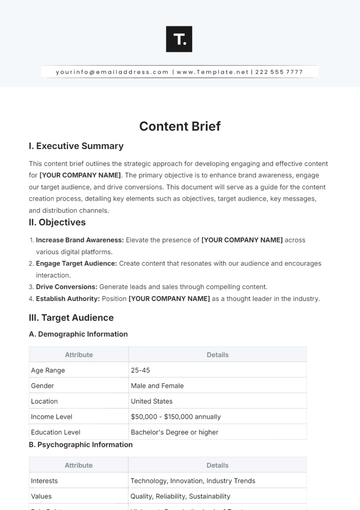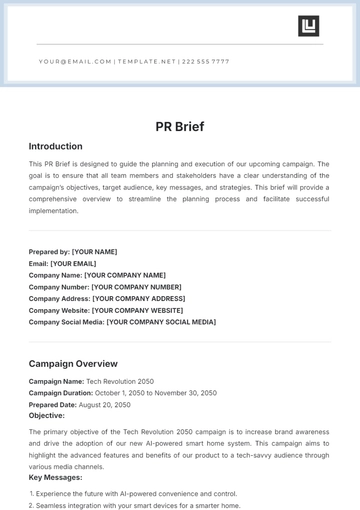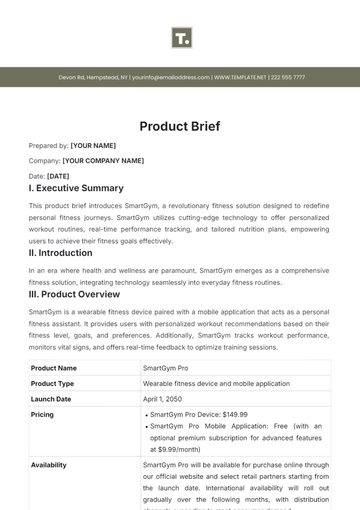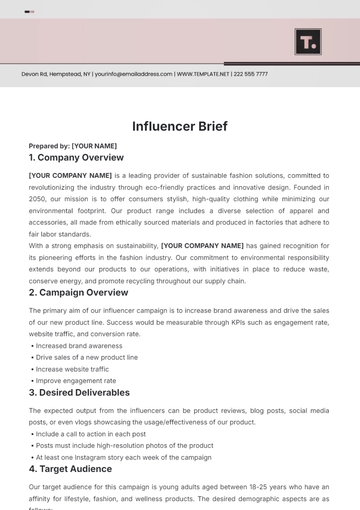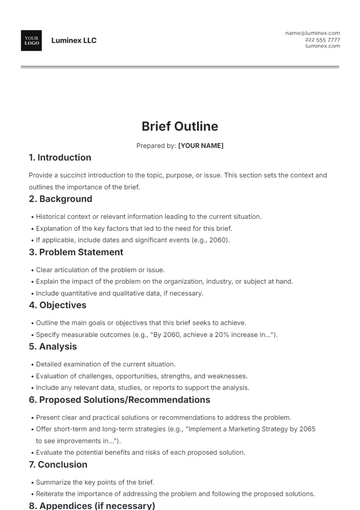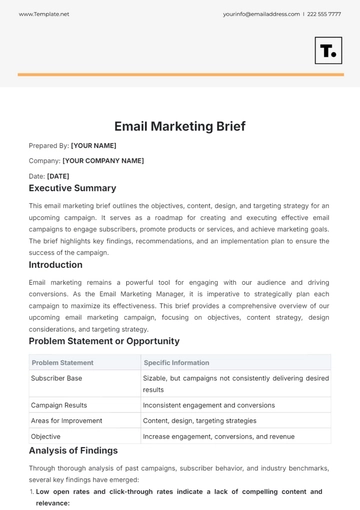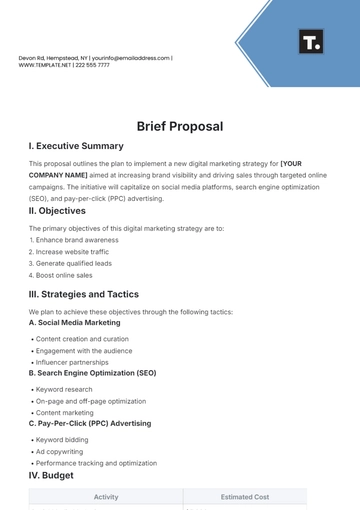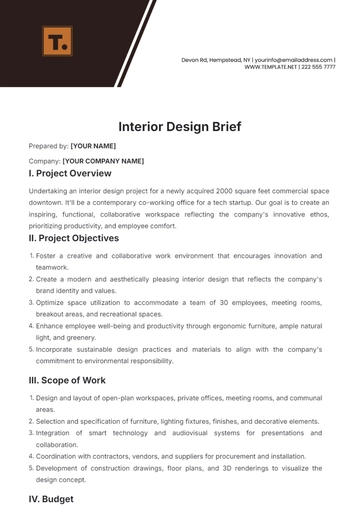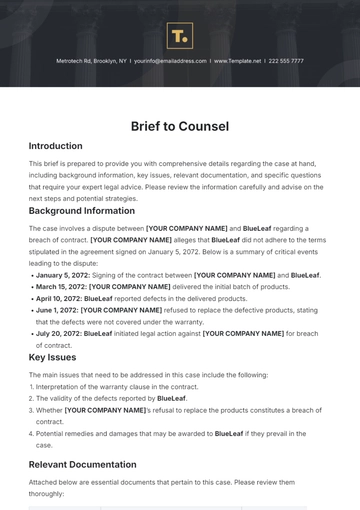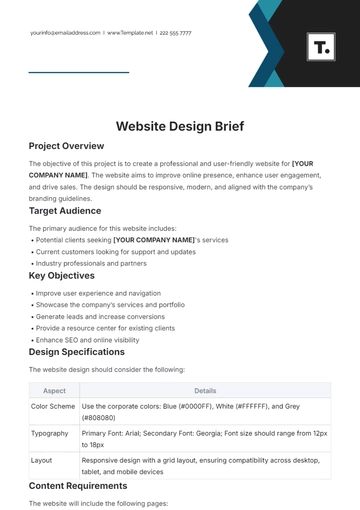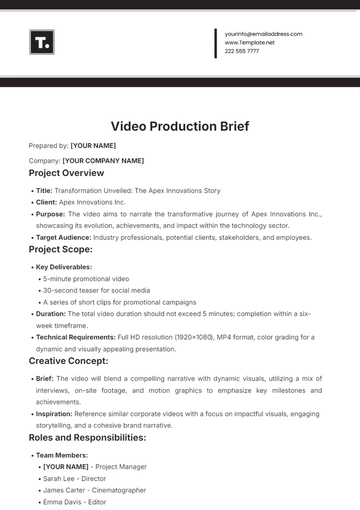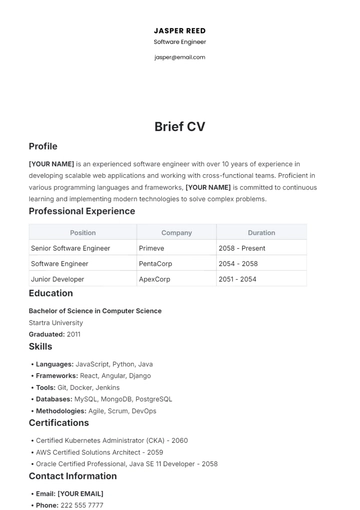Free Vehicle Safety Brief

Prepared by: [YOUR NAME]
Company Name: [YOUR COMPANY NAME]
Vehicle Safety Overview
The ultimate goal of this safety manual is to prevent accidents and ensure the safety of all individuals within and outside of the vehicle. Throughout this manual, standard safety procedures and protocols will be discussed extensively. All users are encouraged to familiarize themselves with this information to ensure a safe and secure environment.
Safe Driving Practices
Safe driving techniques are crucial to prevent any incidents on the road. The following points outline basic, yet vital, safe driving practices:
Seatbelt Usage: Always ensure that you and all passengers wear seatbelts properly while the vehicle is in motion. Seatbelts significantly reduce the risk of injury in the event of a collision.
Speed Limits: Adhere to posted speed limits at all times. Driving at appropriate speeds enhances control and reduces the likelihood of accidents.
Maintain Safe Distance: Maintain a safe distance from the vehicle in front of you to allow for adequate reaction time in case of sudden stops.
Avoid Distractions: Refrain from using mobile devices, eating, or engaging in other distracting activities while driving. Concentrate fully on the road and surrounding conditions.
Never drink and drive: If you plan on consuming alcohol, always arrange for a designated driver who will abstain from drinking and can safely drive you home.
Vehicle Inspection Procedures
Inspecting your vehicle regularly can help detect problems before they escalate or cause accidents. A comprehensive guide for vehicle inspection includes:
Components | Description |
|---|---|
Tires | Check for adequate tread depth and pressure |
Brakes | Test for responsiveness and ensure they are in perfect condition |
Lights | Check headlights, brake lights, and signal lights |
Oil Levels | Ensure sufficient levels and quality of oil |
Wipers | Check their performance, especially in adverse weather |
Emergency Protocols
Emergency Contact Information: Keep a list of emergency contacts readily available in the vehicle, including local emergency services, roadside assistance, and personal contacts.
Response to Accidents: In the event of an accident, prioritize safety by moving to a safe location, checking for injuries, and contacting emergency services immediately. Exchange information with other involved parties while refraining from admitting fault.
Regulations and Policies
All drivers are expected to comply with our company's driving regulations and policies. Failure to do so can result in disciplinary action. Some key regulations include:
Drivers must possess a valid driving license.
Regular maintenance and inspections of vehicles are mandatory.
Violations of traffic rules will not be tolerated.
Conclusion
Safety is paramount when operating a vehicle. By incorporating safe driving practices, conducting regular vehicle inspections, and familiarizing yourself with emergency protocols and relevant regulations, you contribute to a safer road environment for everyone. Remember, responsible driving saves lives.
- 100% Customizable, free editor
- Access 1 Million+ Templates, photo’s & graphics
- Download or share as a template
- Click and replace photos, graphics, text, backgrounds
- Resize, crop, AI write & more
- Access advanced editor
Introducing Template.net's Vehicle Safety Brief Template, your comprehensive tool for ensuring road safety. This editable and customizable template simplifies outlining vehicle safety protocols, maintenance schedules, and emergency procedures. Tailor it effortlessly to your fleet's needs, ensuring compliance and risk mitigation. Plus, it's editable in our Ai Editor Tool, offering seamless adjustments for personalized briefs. Drive with confidence using this essential resource.

